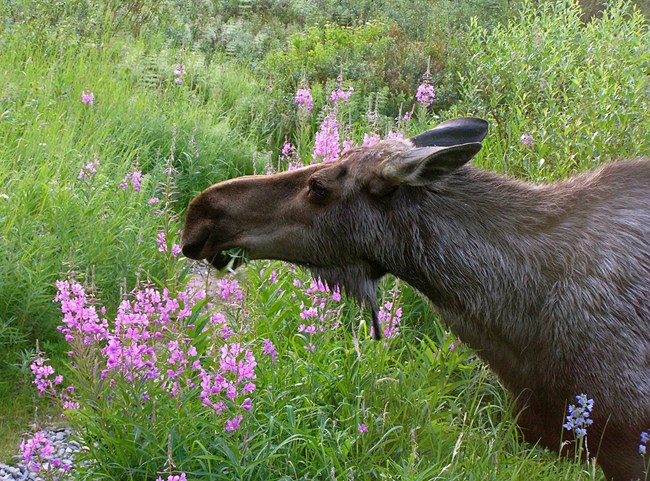
NPS / J. Mills 
NPS Photo/J. Mills Moose (Alces alces) are the largest member of the deer family. They, along with caribou, are the only members of the deer family in the Lake Clark area. Moose are found below treeline in transition areas between forest and tundra, between aquatic and terrestrial environments, and in areas that have been burned or disturbed. An adult male (bull) moose can weigh as much as 1,600 pounds and females (cows) can reach 1,300 pounds. They have extremely long legs that enable them to wade into lakes and rivers and through deep snow. Their hair ranges from golden brown to nearly black and they have a very large head with a dewlap of skin, called a "bell," under the chin. ReproductionMoose mate in late September and early October. The bulls will use their antlers to spar with each other during the breeding season, also known as rut. During the this time, bulls can be extremely territorial and dangerous. The antlers that they grew in spring and summer are shed by early winter, once the breeding season ends. The breeding season is one of the few times moose will gather in small groups. They are otherwise solitary creatures and live most their lives by themselves. Human InteractionsMoose are the most hunted big game species in Alaska. An average of 7,000 animals are harvested each year, providing more than three million pounds of meat. In the summer months, moose blend in well to their environment and can be surprisingly hard to see for such large animals. They are likely to stand their ground even when they hear people approaching, so pay close attention to your surroundings, especially in prime moose habitat such as willow thickets or around streams or ponds. If you encounter a moose at close distance...
|
Last updated: February 20, 2018
